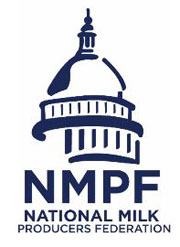
The hype couldn’t last forever.
No matter how many celebrity funders are brought on board or “next best thing” pitches are made to launch a product, eventually, over-the-top marketing comes back to bite, and that’s what’s been happening in the world of fake food. Here are a couple recent examples.
Oatly, the darling of the plant-based beverage set, lost one-fifth of its trading value in one day last month after warning it wouldn’t meet revenue expectations. As is the fashion of the day, Oatly blamed the pandemic and supply chains, but the simple truth is, consumer demand isn’t what it was earlier hyped up to be. Third-quarter sales in the Americas, expected at 40 million liters a month, fell short by 3 million.
The company is facing quality control issues as well, with a recall in its native Sweden for potential loose metal in its products. Of all the ingredients seen in plant-based beverages, “loose metal” would be among the least desired – and that’s saying a lot. Oatly’s trajectory toward making oats-and-chemicals America’s drink of choice is falling like a lead balloon – evidence of that via a battered share price, which has kept falling since the bad news was revealed, is a welcome sign of marketplace sanity.
Beyond Meat is another case study in facts can complicate an all-too-perfect narrative. Last month the company had to dramatically lower its expectations for revenue growth, using the pandemic as a cover for a consumer market that’s fizzled much faster than anticipated. Share prices fell accordingly, and like Oatly’s, they keep heading down. Beyond Meat isn’t in the fake dairy business (though it’s made rumbles), but it’s all the same story in animal agriculture, with so-called “innovators” making a short-term splash, then fading with their ad campaigns.
None of this, to be sure, means these companies are going to disappear. Overpriced, flavored plant water has been around for four decades, and while we still wonder why anyone thought they could improve upon the venerable Boca Burger, Beyond Meat has carved its niche. Consumers want variety, and consumer attraction to alternative products is something P.T. Barnum would have found completely understandable generations ago. Though we regret their effects on public health and the environment, fake foods are likely to proliferate even further, as test tubes and fermentation labs bring new imitators that will employ the same sales tricks as their plant-based predecessors. The imposters, it’s safe to say, are here to stay.
What doesn’t need to stay are lax labeling standards and consumer misinformation. A market functions better when it’s transparent – that’s true at a local supermarket as much as it is on Wall Street. This principle is becoming even more important in dairy as where-your-food-comes-from questions become even more crucial to consumer trust and honest marketing.
Over time, promotional flim-flam gets found out, and investors and the public learn that The Next Big Thing isn’t what it was cracked up to be. But the process would move more quickly – and less painfully – if consumers held a clearer understanding of true food “innovation” and better tools for identifying what a food is and what it isn’t. The sooner the puff-up-and-bust cycle is recognized, the more consumer dollars will be better directed toward more nourishing products – the ones that will survive the ups-and-downs of food fads and cash grabs.





